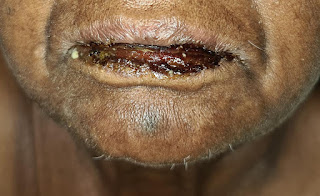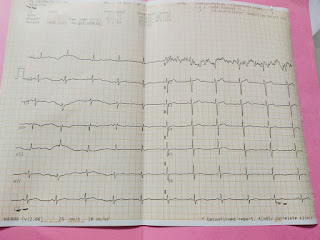G SAI TEJASWINI
ROLL NO: 61
I have been given this case in an attempt to solve in attempt to understand the patient's clinical data analysis to develop my competency in reading and comprehending including history, clinical findings, examination, investigations, and plan of treatment
The complete details of patient are given in this linkhttps://swathibogari158.blogspot.com/2020/09/chronic-decompensated-liver-disease.html
1st patient:
Analysis of the case:
1.What is the reason for this patient's ascites?
A.The probable reasons would be-
As he is chronic alcoholic - may be the reason for cirrhosis of liver leading to liver failure may lead to decrease in albumin causing ascites.Alcoholism causes vitamin deficiencies and malnutrition( decreased protein) this also may cause ascites.there are small renal calculi which may cause proteinuria leading to less albumin in serum causing ascites , patient has cholelithiasis (6mm ) it may cause liver damage leading to ascites, cirrhosis inturn may cause gall stones.
2.Why did the patient develop bipedal lymphedema? What was the reason for the recurrent blebs and ulcerations and cellulitis in his lower limbs?
A. Bilateral lymph edema due lymphatic obstruction, this occur due to hypoalbumenemia, salt, water retention
Development of blebs, cellulitis may be associated with liver failure,stasis of protein rich fluid in lymphatics ompaired drianage- prone to develop infections.
3.What was the reason for his asterixis and constructional apraxia and what was done by the treating team to address that?
A.The cause is thought to be predominantly related to abnormal ammonia metabolism.Asterixis , constructional apraxia may occur due to metabolic encephalopathies in liver cirrhosis, acute liver failure patients may be it would be hepatic encephalopathy. Treatment received-
Lactulose, rifaximin,protein powder, hepmerz.
2nd patient:
Complete history, clinical assessment details, investigations results are given in this link:
https://sainiharika469.blogspot.com/2020/09/hello-everyone.html?m=1
1.Why were his antitubercular therapy stopped soon after his current admission? Was he symptomatic for ATT induced hepatitis? Was the method planned for restarting antitubercular therapy after a gap of few days appropriate? What evidence is this approach supported by?
A.As he is chronic alcoholic, there may be liver damage leading liver disease, drugs in ATT are metabolised by liver so it may further damage liver leading to ATT induced hepatitis. Yes it would be drug induced hepatitis as there were symptoms like fever , generalized weakness,icterus- jaundice, incteased bilirubin, abnormal coagulation profile, elevated AST, ALP levels.
https://www.ncbi.nlm.nih.gov/pmc/articles/PMC4310943/#:~:text=For%20this%20study%2C%20hepatotoxicity%20due,nausea%2C%20vomiting%2C%20abdominal%20pain%2C
https://www.ncbi.nlm.nih.gov/pmc/articles/PMC3940184
2.What were the investigational findings confirming the diagnosis of pulmonary TB in this man?
A.sputum positive for tb- microbiologicaly confirmed case, chest xray showing consolidations, pleural effusion.
3.What was the cause of his ascites?
A. liver failure- chronic alcoholic
Chronic pancreatitis
Cholestasis
Hyponatriemia- secondary to ascites
3rd patient- complete history, clincal assessment,investigations of the patient in given link
https://sushma29.blogspot.com/2020/09/ascites-secondary-to-nephrotic-syndrome.html?m=1
1.What will be your further approach toward managing this patient of nephrotic syndrome? How will you establish the cause for his nephrotic syndrome?
A.nephotic syndrome- salt restriction,diuretics, ACE inhibitors, ARBs
Other investigations - electron microscopy,
Renal biopsy antinuclear antibodies, complements
2.What are the pros and cons of getting a renal biopsy for him? Will it really meet his actual requirements that can put him on the road to recovery?
A. Pros- renal biopsy will be helpful in knowing underlying pathology.
Helpful for giving appropriate treatment.
Cons-
Invasive procedure, may be not much benificial to cure the disease
Renal biopsy - may be helpful.



Comments
Post a Comment